A Cultural Route highlighting the cultural values, heritage and legacy of Saint Paul’s missions to Europe,
to honour Saint Paul, as the Apostle of the nations, through his epistles and intangible heritage in literature, arts, history, philosophy, theology and Christianity in Europe,
towards regenerating the European ideals, with sustainable cultural tourism development and promotion along the route in several countries, regions, cities, islands, local communities and tourist destinations
Saint Paul’s First Missionary Journey Occurred in Cyprus
Saint Paul’s connection to the island of Cyprus can be found in the 13 th chapter of the Acts of the Apostles in the New Testament. In this chapter, there are nine verses (5-13) detailing the missionary journey of Paul and Barnabas on the island of Cyprus, which was part of the saint’s First Journey. According to Acts 13, the two missionaries first landed in Salamis. Located on the east coast of the island, Salamis was the primary port and commercial center of Cyprus. Paul and Barnabas preached the word of God in the synagogues of the Jews while they were in the city.
Paul and Barnabas arrived on Cyprus in 45 or 46 AD, landing at Salamis, Barnabas’s birthplace. According to legend, they then proceeded to Kition, current-day Larnaca, where they supposedly met with Lazarus, who had washed up in Larnaca after Jesus of Nazareth, according to the Bible, had raised him from the dead. From Kition they moved along the coast to Paphos, where Paul was supposedly tied to a pillar and whipped for trying to preach Christianity to the locals. He mentions being whipped in Corinthians 2 11:24: “Five times I received from the Jews the forty lashes minus one,” but he does not say where. The pillar that Paul was tied to when he was whipped in Paphos—at least according to legend—still stands in front of the church of Panagia Chrysopolitissa.
Antiquity Cultural Route (Rural)
Discover the rich, historical wonders of an island that has seen many visitors through the ages, and bears the unique mark of each of them. As you follow a route of ancient ancestors, the insight and revelations they offer will transport you back to the adventures of bygone eras and heroic times. From the oldest settlements to grand architectural feats, a vast choice of archaeological sites can be explored, with so many paths leading back to the glorious past.
Begin your journey on the east coast with the ancient city of Kition in Larnaka (Larnaca). The site provides the first clear evidence that the Mycenaean Greeks arrived in Larnaka in the 13th century BC, and the Phoenicians in the 9th, and features temples dating back to these times.
Thereafter, head for new heights between Larnaka and Lemesos (Limassol), where the Neolithic settlement of Choirokoitia stands proudly on the hillside, distinctly marked out by cylindrical stone and mud dwellings that lay claim to the earliest permanent human housing on the island. The site is remarkably well-preserved and has been a listed UNESCO World Heritage Site since 1998.
Further down the southeast coast, the ancient Greco-Roman Kourion stands as one of the island’s top ancient highlights and was an important city-kingdom in antiquity. Its magnificent theatre was built in the 2nd century BC and extended in the 2nd century AD. Today, the theatre has been completely restored and is used for open-air musical and theatrical performances during the summer months, commanding breathtaking views of the surrounding patchwork land and sea.
As you follow the coastline towards Pafos (Paphos), history further comes to life, with the whole town listed as a UNESCO World Heritage Site, thanks to its world-famous archaeological sites that stretch out from Palaipafos (Kouklia) to the heart of Kato Pafos. Included are ancient villas of stunning mosaics and numerous sites associated to the cult of the Ancient Greek Goddess of Love and Beauty, Aphrodite, whom legend tells was born of sea foam in the region.
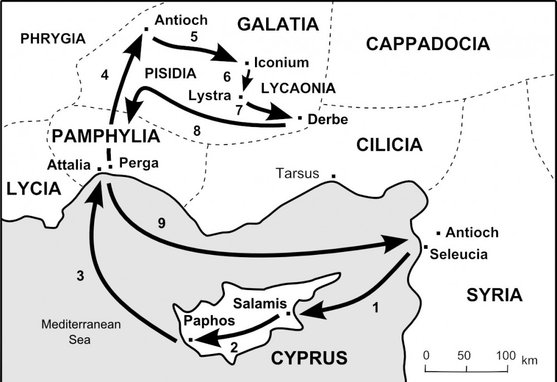
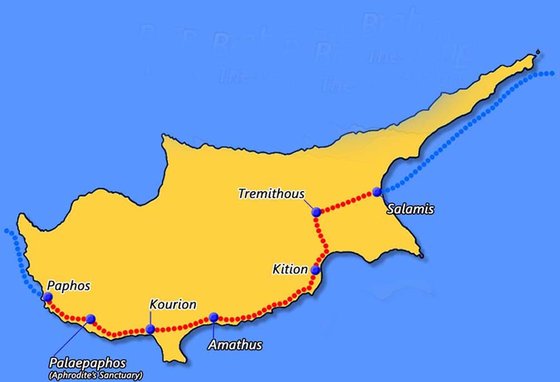
Alleged route of Paul and Barnabas through Cyprus. This assumes they used roads built by the Romans to get from Salamis to Paphos. Their itinerary is not detailed in the Bible.
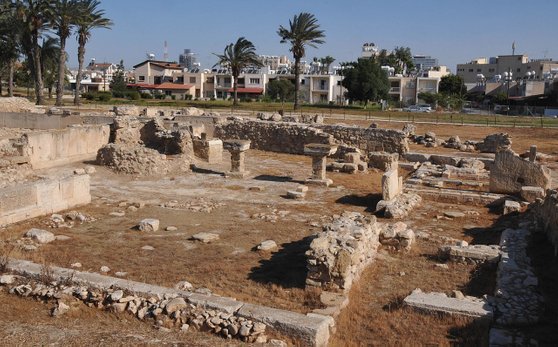
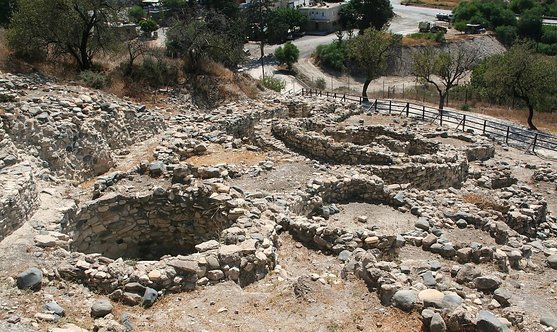
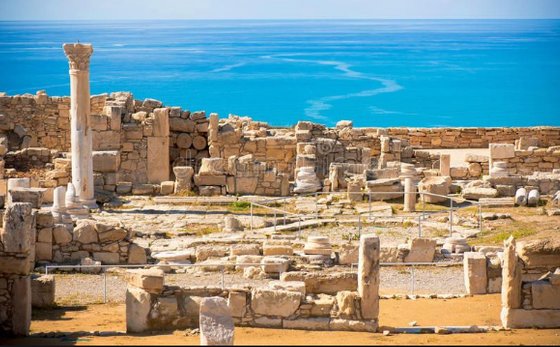
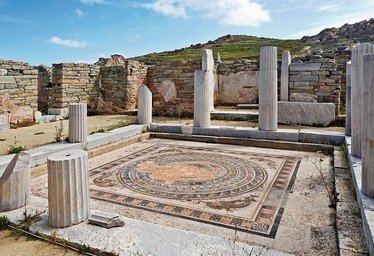
Get in Touch
European Grouping of Territorial Cooperation
"In the footsteps of St Paul, the Apostle of the nations" - Cultural Route
c/o Region of Central Macedonia,
26 October street 64,
Thessaloniki 54627
Greece
